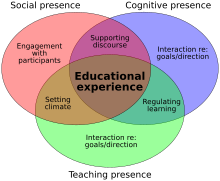With Monday’s announcement from the Chancellor of the California-State University system, it seems increasingly likely that SUNY will similarly be delivering instruction almost entirely online in Fall 2020. As we collectively prepare our courses for this contingency, if only the English Department had its own virtual forum for discussing and sharing ideas and resources for teaching and learning….
Since large lecture courses are now first in line for conversion to distance-learning format, in preparation for teaching American Literature I (EGL 217) I’ ve begun our Center for Excellence in Learning and Teaching‘s Online Learning Certificate Training. Led by the instructional designers Carol Hernandez and Kristin Hall, it’s a five-week sequence, with Part I concluding with the submission of a syllabus to the CAS Curriculum Committee, and Part II (as I understand it) focusing on implementation strategies and building out the course within Blackboard. (I’m a hater, but I’m resigned to working within Blackboard for the sake of consistency.) I’m in the second of three cohorts of faculty to undertake the training this summer.
Anyways… in the interest of sharing knowledge within our local community of practice, I’m going to blog about it, especially with the interests of EGL in mind. Hopefully, over the summer and into the school year, the blog will have a variety of contributors who can move forward our discussion about teaching and learning in these times.
Getting Started: Frames
I’ve just concluded the first of four learning modules in Part 1 of the online teaching certification course. In introducing us, as students, to the course design, the course also models introductions and course designs. Accordingly, drawing on a theoretical framework informed by pragmatist philosophy, it aims to establish our cohort as a Community of Inquiry (CoI).
As Dolan et. al. assert in one of our assigned readings, building community is key to the success of online teaching. An optimal course design and implementation should accomplish everything the diagram above represents: fostering and interrelating social, teaching, and cognitive presences towards a fully-realized educational experience. I’m planning to discuss this model with my students, because I think it’s important for them to understand and hopefully to buy in to the purposiveness of the course design.

Backward Design Model, Wikipedia
In that sense, building community is really preliminary to specific course objectives, such as the ones that structure the Stony Brook Curriculum. CELT emphasizes objective-driven course design, or “backward design“: instead of a compendium of course content, the syllabus is a “road map” to desired outcomes.
Module 1 raised some questions for me. I really prefer the asynchronous approach Carol and Kristin are presenting, and having us participate in, to the synchronous, zoom-heavy instruction that took place for much of the past semester, and I think a lot of our students will, too. But whereas previously a student might enroll in one such online course in a semester, we’re facing the prospect of requiring our students to enroll in several online courses simultaneously. The demands of all that synchronous asynchronicity, or asynchronous synchronicity, will take a toll. Building an online community from scratch is time-consuming and can be tedious, and our students may be participating in five online CoI’s at once.
So it’s actually useful for me to participate in this training course as a student, because it helps me understand how our own students may become overwhelmed, especially when participating in several online courses – each beginning with its own icebreakers and syllabus quizzes – concurrently.
For example, after only a couple days, I already experienced thread fatigue. VoiceThread is a great tool, but after posting my required introduction and responses to colleagues posts, it was hard to keep going back and attending to the discussion. All day long, I kept getting email announcements about new posts, and I confess that I stopped trying to keep up. The number of unread messages kept mounting.
I’ve had the same experience with discussion boards; I know that my own students, even the most motivated ones, often tend to make pro forma attempts to meet posting quotas and conform to the grading rubric, rather than authentically following and engaging with the discussion.
In my past experience with online teaching, there was an explicit expectation that an online course would require more hours, not fewer, from teacher and students alike. For Fall 2020, though, that extra demand would be unreasonable. Going forward, I want to think about ways that my developing CoI can make room for and perhaps cooperate with others.
Please feel free to comment below. Another thread!


Great post, thank you for sharing.
استديو تصوير نسائي